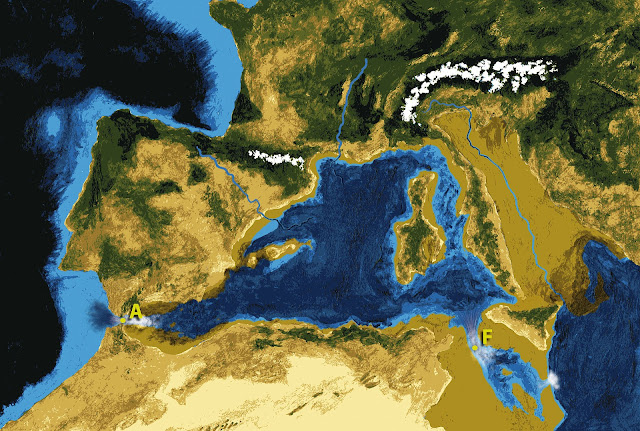Marine scientists have uncovered evidence of one of the largest floods in Earth's history in the central Mediterranean seafloor.
 |
| Artistic interpretation of the flooding of the Mediterranean through the Gibraltar Strait (A) and the Strait of Sicily (F) about 5.3 million years ago [Credit: Paubahi/WikiCommons] |
One of the theories proposed to explain the refilling of the Mediterranean Sea at the end of the MSC some 640,000 years later is a catastrophic flood through the Strait of Gibraltar.
By examining the most comprehensive collection of seafloor data from offshore eastern Sicily and the Maltese Islands, an international team of geoscientists has now discovered an extensive buried mass of material that is thought to have been eroded and transported by the Zanclean flood. This mass covers an area equivalent to that of the island of Crete and is up to 900 m thick in places. The passage of the Zanclean flood across the Malta Escarpment - a long submarine limestone cliff - resulted in a 1.5 km high waterfall (equivalent to five times the height of the Eiffel Tower). This water eroded a 5 km wide and 20 km long canyon on the seafloor that is still preserved underwater offshore the city of Noto (south-east Sicily).
This discovery is important because it demonstrates that the level of the Mediterranean Sea during the MSC dropped by more than a thousand metres, and that the end of the MSC coincided with a catastrophic flood that affected the entire Mediterranean Sea.
The study was published in Scientific Reports.
Source: University of Malta [March 21, 2018]
